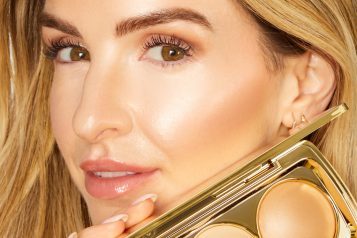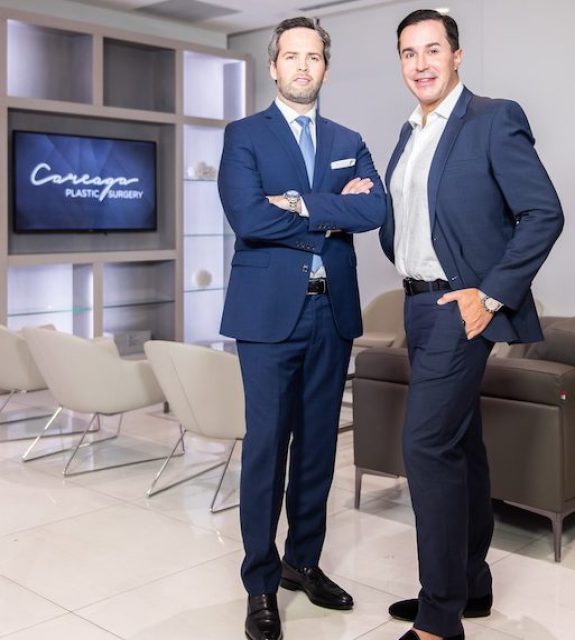
Breast augmentation has played a large role in our culture for decades; however, the visibility and transparency of that role have shifted over time. Celebrities and public figures have undergone breast augmentation and subsequently defined body standards since the invention of the procedure. Though, given the public stigma regarding the procedure, many recipients of the procedure refrained from disclosing their cosmetic surgeries.
In recent years the taboo around the procedure has lifted with increased celebrity transparency and improvements in the accessibility of the procedure to larger swaths of the population. Now patients are more open to talking with their friends and families about the procedures, which has made breast augmentation a normal part of many people’s lives. As a result, topics such as “mommy makeovers” are freely discussed without judgment. Likewise, women of all ages are commonly and safely undergoing breast augmentations. Here Haute Beauty experts Lauren Valentine, Allan Weidman, and Dr. Samuel Lin, MD discuss the history of breast augmentation and the current status of the procedure.
The History
The first augmentation using silicone implants in the United States occurred in the early 1960s. At that time and for years to come, beauty standards glorified an hourglass body figure for women that prioritized large breasts. As a result, breast augmentation continued to gain popularity with norms for implant sizing rising quickly, driven by celebrity figures like Pamela Anderson. Bans regarding silicone in the 1990s halted the ascent of breast augmentation popularity, but the removal of bans and the emergence of saline implants in the mid-2000s revamped cultural interest in the procedure. Trends continued to skew towards larger implants even into the 2010s, heavily influenced by modern celebrities like Kim Kardashian. With regard to implant type and different implant technologies, various trends have risen and fallen. Most notably, textured implants gained popularity and reached the peak of their use in 2016. However, research findings that linked the use of certain textured implants to a form of cancer led to certain types being removed from the market in 2019.
Present Day Status
Current breast augmentation trends prioritize achieving a natural look. As a result, very large or obviously-operated-on breasts have fallen out of style. Instead, patients have begun opting for smaller and more natural appearances. To achieve this goal, new technologies have been developed and gained popularity. Surgical planning using surgeon experience or even computer-generated images and 3D modeling can help patients visualize their postoperative results, allowing patients to make educated decisions regarding size and contour. Furthermore, with the same goal of natural-appearing augmentations, there has also been an increase in non-implant-based reconstruction, which uses the fat in your body to increase breast volume.
Overall, however, as of 2021, American patients still receive larger implants at higher rates than European patients. Simultaneously, Americans are more likely to receive smooth implants compared to textured ones as of 2021. Textured implants were linked to Breast Implant-Associated Anaplastic Large Cell Lymphoma (BIA-ALCL) which has led to the recall of certain implants and an overall decline in the use of these implants.
Innovations in Breast Augmentation
Breast augmentation has experienced significant innovations driven by research and public interest. Advancements in both implant technology and surgical technique have guided the field into a promising era of augmentation. Implant technology has progressed to ensure a natural feel with different types of implant gels, various shapes, and increased options in sizing and profiles to ensure optimal breast contours. At the same time, new surgical techniques to minimize complications and maximize natural appearance have been developed and mastered by plastic surgeons. Simultaneously, the use of fat grafting as a supplement to implant-based augmentation or as a primary form of augmentation without implants altogether has opened the door to more nuanced aesthetic outcomes. Patients can now gain organic-appearing breast shapes using their own tissue, without the need for any foreign materials. The overall results of these developments include fewer complications and happier patients with natural-looking results.
Steps to Surgery
One of the first steps of cosmetic surgery is finding a surgeon to perform the procedure. There are different types of surgeons who can perform breast augmentation procedures, which include plastic surgeons and cosmetic surgeons. While often regarded as interchangeable, these two groups of physicians have different training requirements. Plastic surgeons have at least six years of surgical training with at least three of them directly focusing on plastic surgery. Cosmetic surgeons are trained in a field other than plastic surgery. Some of them choose to undergo further cosmetic surgery fellowships that are 1-2 years long after residency, but this is not necessary. Another important distinction to make is between the types of implants. Both silicone and saline-based implants are available and have proven to be safe. Silicone implants are technologically more advanced and are known to more closely resemble the texture and appearance of natural breast tissue. Conversely, saline implants require essentially no long-term surveillance, and the size can be adjusted after being inserted into the patient.
Barriers and Taboos
Breast augmentation is a common gender-affirming surgery for all who are interested. The greatest barrier to accessing this procedure is cost, with variations in criteria amongst insurance companies. Nationwide, a diagnosis of gender dysphoria is required for the treatment to be covered by insurance. The age at which these procedures can be performed varies by state, institution, and surgeon. Breast augmentation surgery has proved to be safe and offers high satisfaction rates to patients.
The best way to reduce the taboo and stigma regarding breast augmentation is to continue engaging in honest conversations with surgeons and patients about the benefits, risks, trends, and cultural role of breast augmentation in our society. We have already seen large improvements in recent years with celebrities opening up about their experiences with implants and other types of breast augmentation. Many people are optimistic that this trend of decreased stigma will continue as younger generations have been very transparent about their interest in plastic surgery, especially through social media. Patients will commonly post their experiences with plastic surgery on platforms like TikTok for millions to see. While there are risks for misinformation, these posts help to destigmatize the procedures and give other potential patients a window into their journey. Similarly, surgeons also have a role in using their platforms to educate patients and combat misinformation that could otherwise increase the taboo or lead to patient harm.
References
- CNN. From supersized to a more natural look: The evolution of breast implants. Available at: https://www.cnn.com/style/article/evolution-of-breast-implants/index.html. Accessed January 24, 2023.
- Voglimacci M, Garrido I, Mojallal A, et al. Autologous fat grafting for cosmetic breast augmentation: a systematic review. Aesthet Surg J. 2015;35(4):378-393. doi:10.1093/asj/sjv030
- Jalalabadi, Faryan MD*; Doval, Andres F. MD†; Neese, Virginia BS‡; Andrews, Elizabeth BS‡; Spiegel, Aldona J. MD†. Breast Implant Utilization Trends in USA versus Europe and the Impact of BIA-ALCL Publications. Plastic and Reconstructive Surgery - Global Open 9(3):p e3449, March 2021. | DOI: 10.1097/GOX.0000000000003449
- Shah A, Patel A, Smetona J, Rohrich RJ. Public Perception of Cosmetic Surgeons versus Plastic Surgeons: Increasing Transparency to Educate Patients. Plast Reconstr Surg. 2017;139(2):544e-557e. doi:10.1097/PRS.0000000000003020
- Spear SL, Jespersen MR. Breast implants: saline or silicone?. Aesthet Surg J. 2010;30(4):557-570. doi:10.1177/1090820X10380401
- Wan D, Rohrich RJ. Modern Primary Breast Augmentation: Best Recommendations for Best Results. Plast Reconstr Surg. 2018 Dec;142(6):933e-946e. doi: 10.1097/PRS.0000000000005050. PMID: 30489535.
- UPMC. Structural Fat Grafting for Breast Augmentation. Available at: https://www.upmc.com/services/plastic-surgery/services/regenerative-cell-and-tissue-therapies/fat-grafting-treatments/breast-augmentation#:~:text=This%20technique%20uses%20fat%20from,moves%20it%20to%20your%20breasts. Accessed January 24, 2023.
- Ngaage LM, Knighton BJ, McGlone KL, et al. Health Insurance Coverage of Gender-Affirming Top Surgery in the United States. Plast Reconstr Surg. 2019;144(4):824-833. doi:10.1097/PRS.0000000000006012
- Miller TJ, Wilson SC, Massie JP, Morrison SD, Satterwhite T. Breast augmentation in male-to-female transgender patients: Technical considerations and outcomes [published correction appears in JPRAS Open. 2021 Sep 25;30:178-179]. JPRAS Open. 2019;21:63-74. Published 2019 Apr 17. doi:10.1016/j.jpra.2019.03.003
For more information, visit Dr. Samuel Lin's social media:

























